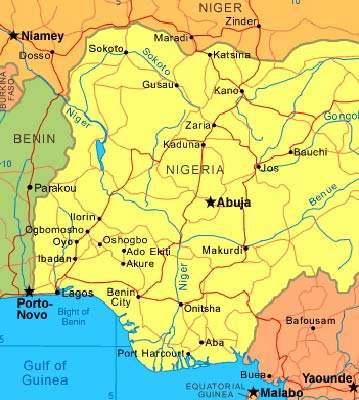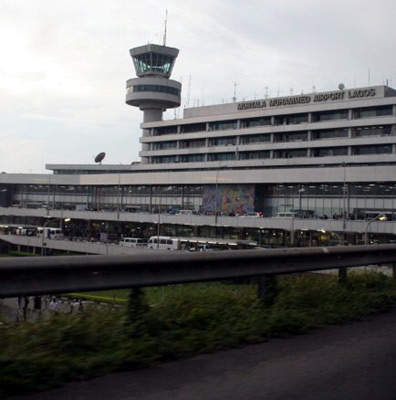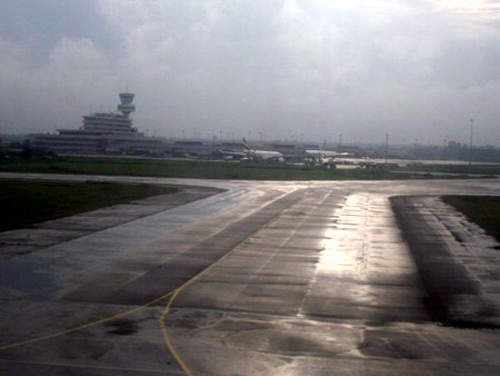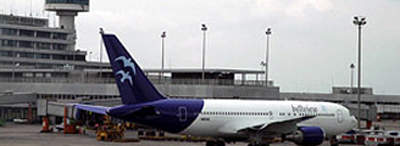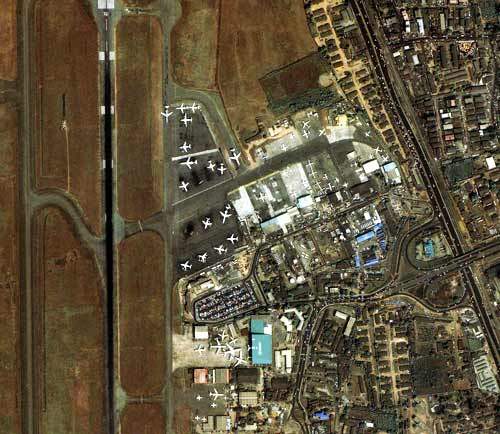Murtala Muhammed International Airport is one of the main airports in Nigeria. Located in Ikeja in Lagos State, the airport serves the city of Lagos and south-western Nigeria and is managed by Bi-Courtney Aviation Services.
The facility was named after former Nigerian military head of state Murtala Ramat Muhammed, who was assassinated in 1976 during an abortive military coup d’etat.
The international terminal was opened in March 1979. The airport consists of an international and a domestic terminal, located about 1km from each other.
The domestic terminal was relocated to the old Lagos domestic terminal in 2000 after a devastating fire. Murtala Muhammed Airport Terminal 2 (MMA2) was constructed to replace the fire damaged building and was commissioned on 7 April 2007.
Passenger traffic in 2008 was 5.1 million. In 2009 it increased 9.1% to 5.6 million.
Murtala Muhammed International Terminal 2
The maximum capacity of the terminal is five million passengers per annum. Set over four levels, it features separate arrival and departure halls, restaurants, lounges and entertainment areas. Travellators and six airbridges provide access, with a possible expansion to 12 airbridges in the near future.
The main terminal building has a total of 31 check-in counters. Electronic information display screens have been extensively installed to guide arriving travellers and to provide departure schedules for various airlines. Flight announcements and other customer information are relayed through a state-of-the-art public address system.
Seating capacity in the departure hall is about 1,000, with part of the facility dedicated to food courts and comfortable lounges for both VIP and economy class passengers.
Facilities constructed around the terminal as part of the project include a six-storey, four-star, 148-room hotel with swimming pool, a casino, a dedicated conference centre and a direct bridge connection to the terminal building.
In May 2010, Bi-Courtney Aviation Services started cargo operations at MMA2. The cargo services include automated and calibrated weighing scales, large cargo capacity, online payment and 24-hour security services.
Finance
In 2003, Bi-Courtney arranged a N20bn ($150m) syndicated medium-term refinancing facility with Zenith Bank, Oceanic Bank, Guaranty Trust Bank, Access Bank and First City Monument Bank.
Security
The terminals are monitored by CCTV cameras. The car parking area is monitored by electronic surveillance.
FAAN signs MoU
In early 2007, the Federal Airports Authority of Nigeria (FANN) signed a Memorandum of Understanding (MoU) that paved the way for domestic flight operations to begin at the new terminal.
The MoU with Bi-Courtney Aviation is focused on areas such as the provision of security services, rescue operations, fire fighting equipment, advisory services and safety operations.
The MoU means that FANN will provide personnel to guide aircraft at the terminal while Bi-Courtney operates the remainder of the facility on a fee-paying basis.
Bi-Courtney Aviation recently revised the operation fees it charges in order to attract more carriers and to make it fairer on smaller carriers. Aero Contractors was the first airline to start operation at the terminal using turbo Dash-8 aircraft for flights to Warri and Port Harcourt.
Bi-Courtney Aviation later revised the operation fees it charges in order to attract more carriers and to make it fairer on smaller carriers. Aero Contractors was the first airline to start operation at the terminal using turbo Dash-8 aircraft for flights to Warri and Port Harcourt.

